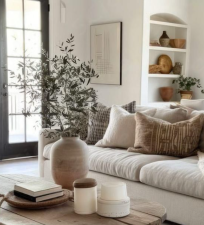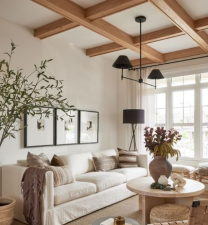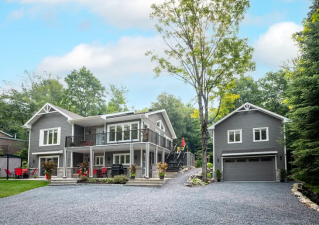Interior design should integrate art and technology into daily life, and achieve harmony between function and form on the basis of existing materials to meet human requirements for spiritual quality. In contemporary interior design, it is necessary not only to meet people's material and spiritual needs, but also to pay more attention to environmental protection and sustainable development. In contemporary times, sustainable development has become a consensus.


Interior design should integrate art and technology into daily life, and achieve harmony between function and form on the basis of existing materials to meet human requirements for spiritual quality. In contemporary interior design, it is necessary not only to meet people's material and spiritual needs, but also to pay more attention to environmental protection and sustainable development. In contemporary times, sustainable development has become a consensus. Some traditional behaviors that waste resources and damage the environment in the field of interior design have been gradually abandoned. Under the thinking of sustainable development, people are also paying more and more attention to how to use resources reasonably and how to protect the environment in the design process. At the same time, through sustainable development design, a living and working space where people and nature coexist harmoniously is created; the positive meaning of sustainable design is to keep up with the pace of development of the times, use new design technology and decorative materials, and create a living environment for people that has both high spiritual enjoyment and green environmental protection.

It can be seen that green, environmental protection and sustainability are the development requirements of modern interior design technology, which is also the fundamental requirement of sustainable development thinking for social development. In order to achieve the sustainable development of the entire society, contemporary interior design should start from the perspective of design, and design a sustainable living environment in accordance with the principle of harmonious coexistence between man and nature. Therefore, sustainable design has gradually become the mainstream trend of the development of the interior design industry in the future. Environmental protection and energy conservation play an important role in sustainable development. On this basis, this paper proposes to explore environmentally friendly interior design under the guidance of sustainable development thinking. "Resource conservation" and "pollution reduction" are two basic levels of indoor environmental protection. At the level of "resource conservation", attention should be paid to the use of renewable resources, the full use of the value of resources, the full use of resources, etc.; at the level of "pollution reduction", in the design of the indoor environment, attention should be paid to the use of environmentally friendly materials, the use of environmentally friendly processes, etc.
Three major categories of sustainable materials This will ensure that you make wise choices and may participate in beneficial partnerships.
- Natural materials
Natural materials are materials that can be found in nature. They are naturally present and can usually be handled safely, unlike synthetic or man-made materials. Natural materials are usually grown, such as wood or cotton, or mined, such as stone, clay and metal. If you are looking for materials that contain fewer harmful chemicals and are easier to safely handle or reuse, they are a good choice.
- Renewable materials
Renewable materials are materials that come from renewable resources. Just because a material is natural, it does not mean that it is renewable. For something to be renewable, it must be able to naturally replenish the resources used at a rate that keeps the resources from being depleted over time. Many natural materials are non-renewable, but materials that can be grown and regrowthed by humans or nature or infinitely recycled are considered renewable.
In addition, the adoption of renewable materials aligns with a growing awareness of the environmental impacts of traditional manufacturing and consumption practices. As societies around the world work to mitigate climate change and protect biodiversity, the demand for renewable alternatives continues to rise.

From eco-conscious consumers seeking sustainable products to governments creating policies that incentivize the use of renewable resources, the momentum toward a renewable future is undeniable. Embracing renewable materials not only solves immediate environmental issues, but also fosters a culture of responsibility and stewardship of the earth for future generations.
- Non-toxic and non-hazardous materials
Many materials, whether natural or synthetic, are manufactured or treated with hazardous chemicals that have toxic effects on people, animals, and the natural environment. These substances can be harmful long after their initial application and can cause problems with the safe disposal of the material. Choosing non-toxic alternatives makes materials more sustainable, even if they are man-made.
After hundreds of years of rapid development, human society has achieved great achievements, and in the future, the human world will continue to update and develop. People's transformation of nature, while meeting their own living and life needs, has also brought great damage to the natural environment. In this case, we can clearly see that it is very necessary to guide interior design with sustainable development thinking for environmental protection work and the sustainable development of the entire society.


